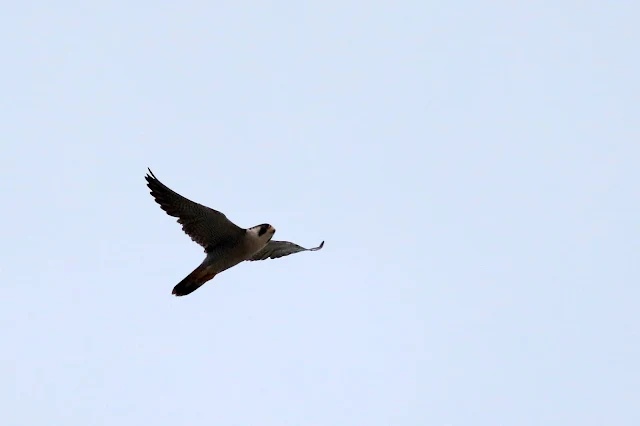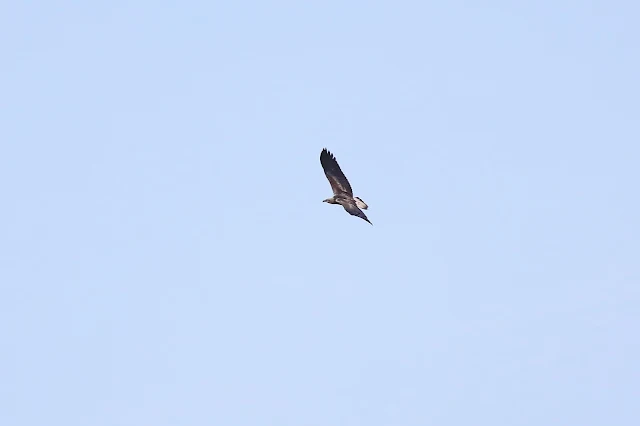 |
| The fishermen's boat returned to Tanjung Api jetty, with Tanjung Tembeling in the background. |
Tanjung Lumpur is a picturesque traditional fishing village situated near the mouth of the Kuantan River in Pahang, Malaysia. The name "Tanjung Lumpur," which translates to "Mud Cape" in English, signifies the village's origins on muddy terrain, established by Malays in Kuantan many decades ago. This charming village is well-known for its delicious grilled fish dishes and rich cultural heritage.
I had the wonderful opportunity to stay at the Swiss-Belhotel in Tanjung Lumpur, ideally located right on the mud flat. From the hotel balcony, I was able to photograph some stunning local birds, making my visit truly memorable. It's a destination not to be missed!
 |
| Changeable hawk-eagle (Nisaetus cirrhatus) |
 |
| Black-thighed falconet (Microhierax fringillarius) |
 |
| Black-thighed falconet (Microhierax fringillarius) |
 |
| Black-thighed falconet (Microhierax fringillarius) |
The area has mudflats, but no shorebirds, even at low tide.
In fact, there are afew shorebirds on the east coast of Peninsular Malaysia. (Pahang, Terengganu, Kelantan).
Shorebirds, or waders, are not absent but generally less common along the east coast of Peninsular Malaysia compared to other regions, such as the west coast.
I consulted ChatGPT for insights, and here are the compelling reasons why this disparity exists:
1.** Lack of Suitable Habitat**
• Shorebirds typically prefer mudflats, sandflats, and estuarine environments that are extensive and rich in invertebrates. The east coast has sandy beaches and fewer intertidal mudflats compared to the west coast, where larger mudflat systems (e.g., Kuala Selangor) are found.
2. **Tidal and Coastal Characteristics**
• The tidal range along the east coast is smaller than on the west coast, and sandy shores dominate. These areas do not provide the nutrient-rich feeding grounds shorebird species require.
3. **Seasonal Monsoons**
• The northeast monsoon (November to March) brings heavy rains and rough seas, which may disrupt habitats and make the east coast less hospitable to shorebirds during this period.
4. **Migration Patterns**
• Many shorebirds migrating along the East Asian-Australasian Flyway follow routes that favor the west coast of Peninsular Malaysia, where larger and more accessible stopover sites are available.
5. **Human Activity**
• Coastal development, tourism, and pollution along the east coast may further reduce the availability of undisturbed habitats for shorebirds. |
| View from Swiss belHotel ground floor shows the lowtide mudflat |
 |
| Low tide shows a mudflat in front of the Swiss belHotel Kuantan (pic from swiss belhotel website) |
 |
| A beach fisherman examines his net at dawn during high tide. |
 |
| white-bellied sea eagle (Icthyophaga leucogaster) |
 |
| Juvenile white-bellied sea eagle (Icthyophaga leucogaster) |
 |
| White-bellied Eagle over water by Chat GPT |
 |
| Falconet in flight by Microsoft Chat 4o |
 |
| Fisherman boat passing the Masjid Tanjung Api. |
 |
| Picture of gabion walls in front of Imperium Residence Kuantan. |

No comments:
Post a Comment